Burgundy is one of the most emblematic wine regions in the world. Get your head around the terroir essentials in our Burgundy wine region guide and Fast Facts. Our guide to Burgundy includes: the essentials of terroir (the soil types, climate, average temperatures, rainfall, longitude and latitude, and altitude); the main grape varieties used for different wine varieties; the viticultural methods, age of vineyards and vine training systems; the winemaking techniques, wine styles and tasting notes; and the production area in size and number of producers.
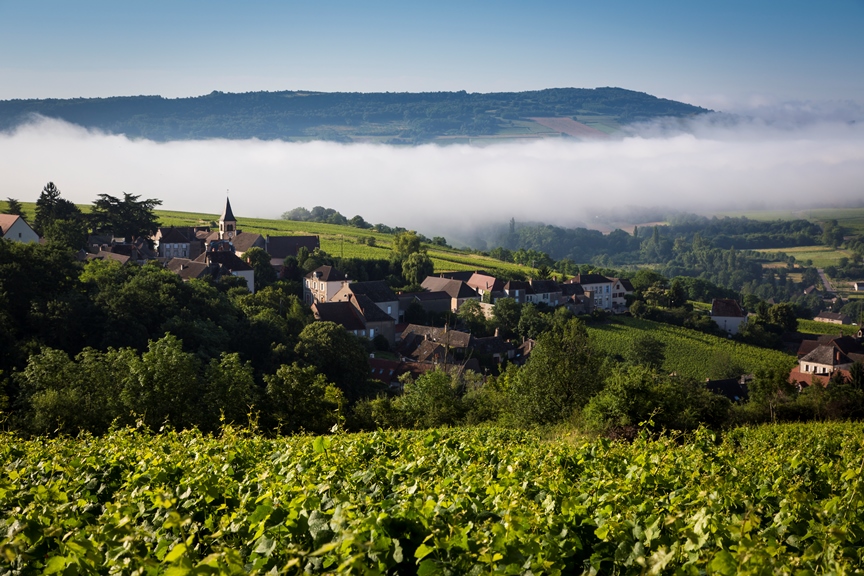
Village of Decize-Les-Maranges in the Côte de Beaune, Bourgogne Wine Board (BIVB).
[mepr-hide if=”rule: 2080″]
…
This content is exclusive for Members. Take a look at the introductory packages below to become a Member of 80 Harvests and get unrestricted access to all our content.
Thank you for supporting the journey and being part of the 80 Harvests community!
[mepr-group-price-boxes group_id=”2070″]
[/mepr-hide]
[mepr-show if=”rule: 2080″]
Where is it?
Burgundy is a region running from north to south in the eastern part of central France. Dijon is the regional capital.
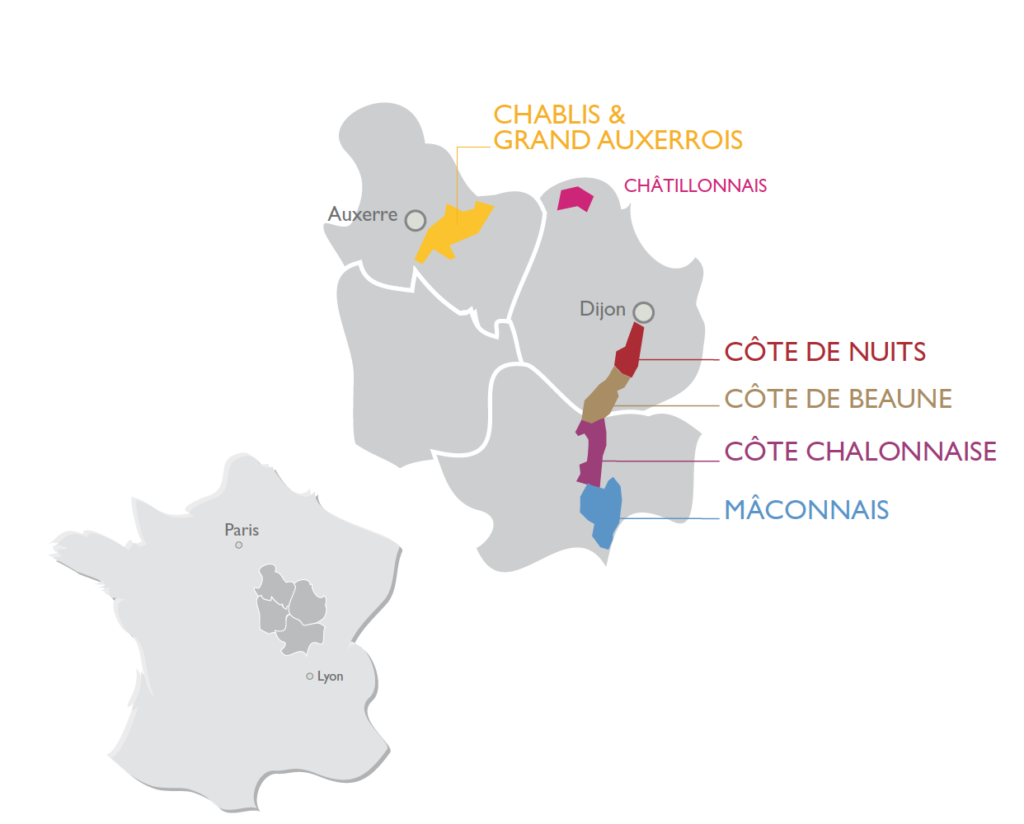
The Essentials of Terroir
Climate & Landscape
This region tends to be continental or semi-continental, with the 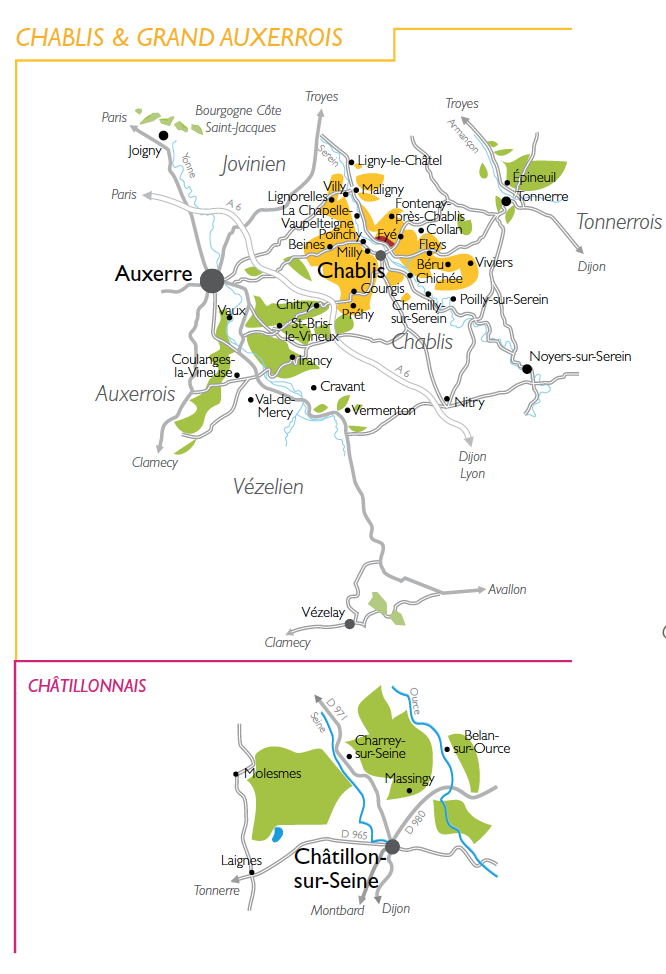 climate being coolest in the north and warmer in the south. Although the summers can be hot, the winters are longer and the growing season in Burgundy is much shorter (than Bordeaux for example) which is why earlier-ripening varieties such as Chardonnay and Pinot Noir do particularly well. Even Pinot Noir can struggle to reach full ripeness some seasons.
climate being coolest in the north and warmer in the south. Although the summers can be hot, the winters are longer and the growing season in Burgundy is much shorter (than Bordeaux for example) which is why earlier-ripening varieties such as Chardonnay and Pinot Noir do particularly well. Even Pinot Noir can struggle to reach full ripeness some seasons.
The northernmost regions of Chablis, the Grand Auxerrois and the Châtillonnais have a mainly semi-continental climate, with hot, sunny summers, and long, harsh winters.
–
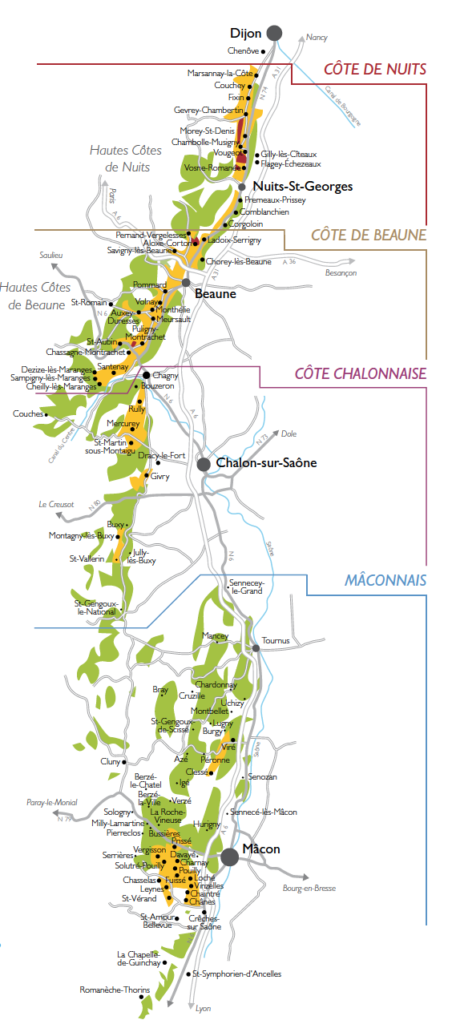 Moving south, the Côte de Nuits and the Hautes Côtes de Nuits have a continental climate, with hot summers and dry autumns.
Moving south, the Côte de Nuits and the Hautes Côtes de Nuits have a continental climate, with hot summers and dry autumns.
–
The Côte de Beaune, the Hautes Côtes de Beaune and the Côte Chalonnaise also enjoy hot summers, which can extend into the autumn months. The aspect and climate enable these regions to produce great red wines.
–
Further south again, the Mâconnais has warmer weather and less rainfall. A slight Mediterranean influence here means that the grapes ripen earlier than in the rest of the region and the grapes are often harvested a week or so earlier as a result.
–
Temperatures
Temperatures can be sub-zero in winter in Chablis and spring frost is an especial hazard. In Beaune, the average minimum temperature is just below 0˚C, while the average maximum in summer is around 26˚C.
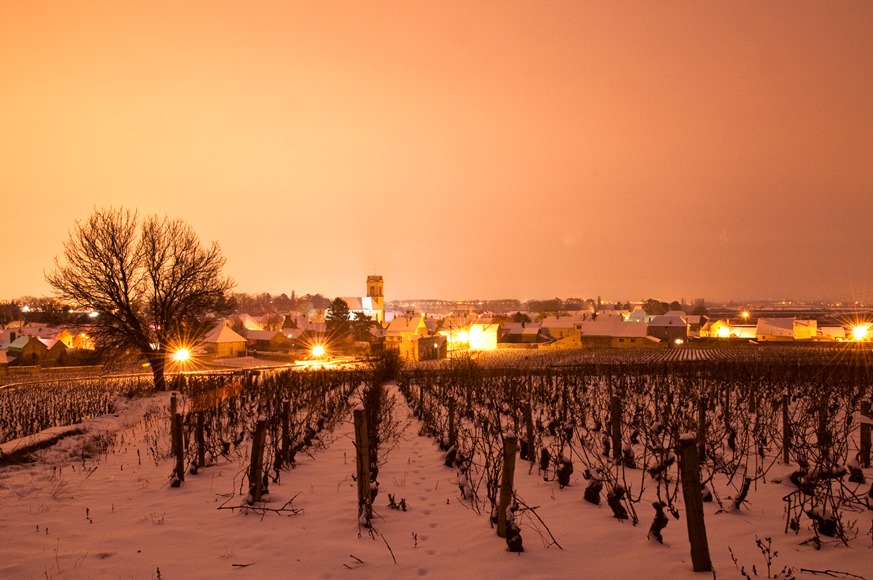
Photo: Village of Pommard in the Côte de Beaune, with kind permission of the Bourgogne Wine Board (BIVB).
Rainfall
700mm on average
Soils
The soils make a very profound difference to Burgundy wines and understanding the different vines’ preferences is part of the key to understanding the styles from the different areas. In general, Burgundy’s soils are on ancient limestone beds, which are particularly suitable for Chardonnay and Pinot Noir. The subtle differences between vineyards, however, is what has marked the differences between wines – which are often recognised by their vineyard rather than the producer name.
Chardonnay thrives on limestone and marls with a lot of clay. Chablis, with its fossil-rich limestone soils produces one style of Chardonnay, while the soils in areas like Puligny-Montrachet, Meursault, and Corton-Charlemagne also make great Chardonnay wines, each with its own expression.
Pinot Noir likes the gentle slopes of the limestone hills and the good drainage offered by their stony soils. For instance:
- On the Côte de Nuits and the Hautes Côtes de Nuits, Pinot Noir produces some remarkable, profound and subtle red wines.
- On the Côte Chalonnaise and in the Couchois, the Pinot Noir grape enjoys a south-facing location to bring vigor and character to the wines of Mercurey, Givry and Rully.
Much of the Chablis region is unique for its soil rich in minerals and marine minerals, known as Kimmeridgean soil (a stratum from the Upper Jurassic era around 145 million years ago). Chardonnay grows very well here.
In the Grand Auxerrois and the Châtillonnais, the soil is mainly limestone.
In the Côte de Nuits, formed some 175 million years ago, as in the Côte de Beaune, which is a little younger by some 25 million years, an agglomerate of scree created rendzina (shallow soil formed by the weathering of the bedrock) and brown limestone soils.
Farther south, the Côte Chalonnaise and the Couchois sit on a rocky limestone foundation from which sand, flinty clay and more marly soils emerge. The white wines produced here come from vines grown on clay-limestone soils, but the reds express themselves better where there is less clay.
Leaning towards the Saône, the hills of the Mâconnais form a succession of parallel blocks, interspersed by faults and limestone ridges. The soil is rich in calcium and ideal for growing Chardonnay. In the south, the subsoil is silica-rich marl with chert limestone (siliceous concretions), and crinoidal limestone with sandstone outcrops. This terrain is home to varietals for making white wines, as well as the Gamay grape.
This video gives an idea of the geological formation of Burgundy (in French):
Longitude
5˚ E (Dijon)
Latitude
47.3˚ N (Dijon)
Altitude
200-500 masl
Viticulture Facts & Vineyard Management
This is a region with many small producers. Sustainable forms of agriculture, including lutte raisonnée, organic and biodynamic, are becoming fairly widespread.
Aspect
The vines are mainly planted on slopes and aspect is an important factor in Burgundy, as the right aspect helps:
- protect the vineyards from frost and westerly winds
- ensure the vines get sufficient exposure to the sun
- make sure the vineyards drain well.
Therefore:
- Côte Chalonnaise and Mâconnais vineyards tend to be east- and south-facing
- Côtes de Nuits and Beaune vineyards are often east-south-east facing
- Chablis vineyards tend to face south-east to south-west
Vine Training systems
Single or double Guyot is the most common system.
Viticultural Challenges
Winter freeze and spring frost are a hazard throughout the region, especially in the more northern parts of Burgundy: Chablis, the Grand Auxerrois and the Châtillonnais. In winter, the earth is shored up around the vines to help protect them from frost and extreme cold temperatures. When spring frosts threaten, aspersion is used, where the growers spray the vines with water, which forms a protective cocoon around them when temperatures fall.
In some years, much of the crop is lost to hailstorms and so anti-hail generators are being installed throughout the region. Around three hours before a storm is due, silver iodide particles are fired at the gathering storm front. The hailstones agglomerate in the updraft around the silver iodide (which has a crystalline structure similar to ice) and they become smaller and less harmful when they fall. The region is also looking at netting and helium balloons as other anti-hail measures.
Rain can fall in May, June or October, seriously impacting the crop.
Grape Varieties
Chardonnay
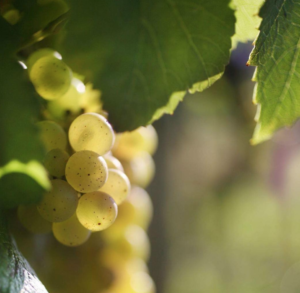 Accounting for over 50% of all the vines currently planted in Burgundy, Chardonnay originates in Burgundy and is descended from Pinot Noir and Gouais Blanc. It adapts easily to different environments but, as an early-ripener, it is susceptible to spring frosts. The vines produce small, elongated bunches of loose, golden-coloured grapes. They produce lots of very sweet juice. Chardonnay is a chameleon grape that can produce very different styles of wine according to the soil and climate of the area where the grapes were grown and the viticultural and winemaking techniques. It is considered to be a non-aromatic variety.
Accounting for over 50% of all the vines currently planted in Burgundy, Chardonnay originates in Burgundy and is descended from Pinot Noir and Gouais Blanc. It adapts easily to different environments but, as an early-ripener, it is susceptible to spring frosts. The vines produce small, elongated bunches of loose, golden-coloured grapes. They produce lots of very sweet juice. Chardonnay is a chameleon grape that can produce very different styles of wine according to the soil and climate of the area where the grapes were grown and the viticultural and winemaking techniques. It is considered to be a non-aromatic variety.
Aligoté
Aligoté is in decline and accounts for just 6% of the vineyard area. Like Chardonnay, Aligoté is the result of a cross between Gouais Blanc and Pinot Noir. This is a vigorous vine producing grapes with high acidity. If yields are controlled and it is planted in poor soils on slopes (the very sites usually given up to Chardonnay), it is capable of producing fine, dry wines.
Pinot Noir
Pinot Noir accounts for just over 40% of the vineyard area in Burgundy. This is a very old variety, part of the family of vines known as Noiriens and the father of many other varieties, including Chardonnay, Aligoté and Gamay.
Pinot Noir vines produce small, compact bunches of fine-skinned, delicate grapes, that are bluish or deep violet in colour. They yield a sweet, initially colorless juice.
This is a capricious variety that is difficult to grow. It is at its best in a cool climate where it can ripen slowly, developing the maximum aromas and flavours without the sugars soaring and acidity plummeting. Yet, it is highly susceptible to vine diseases, particularly rot in damp conditions. Like Chardonnay, it is considered to be good at expressing terroir and it responds well to the limestone soils in Burgundy
Gamay
Just 2.5% of the vines planted in Burgundy are Gamay. Like Chardonnay and Aligoté, Gamay is a relation of the Pinot Noir grape, dating back to the 14th century. Gamay Noir à Jus Blanc (to give it its full name) produces medium-sized, tight bunches of oval grapes that are very dark in colour. It tends to be grown in the Mâconnais region, where it thrives on the granite and siliceous sub-soils, and also in Beaujolais. It is easier to grow than Pinot Noir and, if yields are too high, makes light-bodied, acidic wine. Light in colour and tannins, it can make an easy-drinking, fresh and youthful wine. But Gamay is also capable of producing serious wines that can, with age, come to resemble Pinot Noir.
Others
Less than 1% of the vineyard area is dedicated to other varieties.
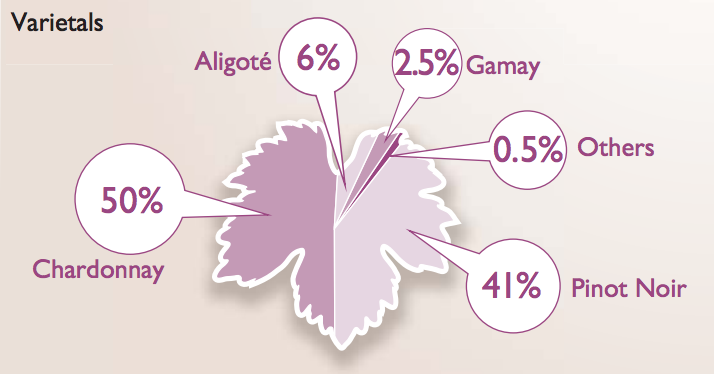
Wine Varieties & Winemaking Styles
The wines in Burgundy tend to made with just one variety (monovarietal).
White wines
Chardonnay
Chardonnay is considered to be good at expressing the terroir of where it is grown and it also takes well to different winemaking techniques, so the wines can vary enormously.
Chablis produces taut, fresh, mineral wines that are pale yellow in colour, with green hues. They are high in acidity and have less body than those produced further south. The aromas also tend to be greener and less ripe, with green apple or citrus notes common, and some people detect a wet stone / mineral aroma. The wines are occasionally aged in barrels and then, over time they become more golden in colour and gain aromas of blossom, nuts or honey.
Chardonnnay wines vary a great deal in the Côte de Beaune, reflecting both the terroir they are from and the winemaking techniques, which typically entail fermentation and/or ageing in oak, malolactic fermentation and lees stirring. These techniques can be delicately managed or heavy-handed and in the latter case, the notes of spice from the oak or buttery notes from the lees stirring can overpower the grape’s own aromas and flavours. Generally, the wines here will be more golden in colour than Chablis, with aromas of white fruit (peaches, apricots) and floral notes, together with a creaminess from the lees stirring and spicy notes from the oak. In the mouth, they are ample, smooth, and powerful.
Farther south, Chardonnay wines from the Mâconnais tend to be fuller in body, smooth and easy to drink, with notes of fresh fruit like melon and nuts. In some cases, barrel-aged wines develop notes of honey and vanilla. Wines from the Côte Chalonnaise vary in style between those of the Côte d’Or and those from Mâconnais.
Aligoté
Bourgogne Aligoté is a pale yellow color and has aromas of white fruit, white blossom, peach, lemon, linden, acacia, hazelnut, green apple, and sometimes citrus fruit. It is a fresh wine, with saline hints and fruity acidity.
Red wines
Pinot Noir
The colour of Pinot Noir wine usually begins bright ruby with violet hues and, over time, it becomes paler and more brick-coloured. On the nose, Pinot Noir offers a wide variety of aromas when young, from fresh berries like raspberries, strawberries and cherries and can have a floral note of violet, as well as aromas of pepper and cinnamon, sometimes accompanied by coffee or smoky notes. Over time, the fresh fruit flavours change to cooked notes of jam or kirsch, and the wine develops notes of mushrooms or truffles, together with game, liquorice or forest floor.
In the mouth, Pinot Noir wines tend to be rounded, with assured yet delicate tannins, which soften over time. The acidity varies depending on the vintage but the wines are usually fresh.
Depending on where it is grown, Pinot Noir can produce intense, structured wines, or else elegant and delicate ones.
Typical regional differences for the main Pinot Noir regions of Burgundy are:
Côte d’Or Pinot Noir
Prime territory for top Burgundian Pinot Noir and once considered the northernmost frontier for red grape growing in France. The Côte d’Or is split between the Côte de Nuits in the north and the Côte de Beaune to the south. Across the entire region there is a further division between the highest vineyards (called the Hautes-Côtes, of Nuits and Beaune respectively) and the lower parts, the lower parts are considered the warmer and better territory. Although the Hautes-Côtes can produce excellent wine in warmer/sunnier years.
- Côte de Nuits: The northern half of the Côte d’Or, these tend to be more savoury style and darker wines with more tannin than in Beaune. The Côte de Nuits has more Grands Crus than any other region in Burgundy, and Nuit-St-George is thought of as the finest of the regions. In the southern half of Nuits, Romanée-Conti is known as a little spicy, Chambertin a bit stronger, and Chambolle-Musigny more delicately perfumed. In the northern half of Nuits, the wines are seen as the finest, longest-living, velvety red Burgundies, with Gevrey-Chambertin best known of all.
- Côte de Beaune: The southern half of the Côte d’Or, these Pinot Noir wines tend to be more fruit-driven and riper in style with lighter colour and aromatics. Standout regions within the Beaune are Volnay and Pommard. Volnay is known for light, etherial, fragrant red wines which are perfumed and pale; whereas neighbouring Pommard is known for darker, heady and more tannic Pinot Noir than Volnay.
Côte Chalonnaise Pinot Noirs are seen as a bit more rustic in style and slightly paler than Côte d’Or wines. Mercurey is the biggest red-producing region, although firm and rustic in youth; Givry is a smaller red wine appellation and typically more fruity and forward.
Gamay
Gamay tends to be deep ruby in colour and can fade to garnet. On the nose, the wines have aromas of red and black fruit and can have animal notes like leather or forest floor aromas. After several years in the bottle, the aromas can evolve towards notes of prunes and spices. In the mouth, these are vibrant wines, quite powerful with marked tannins when young, but the tannins soften over time, leaving the wines smoother.
Sparkling wines – Crémant de Bourgogne
Like the rest of the sparkling wine category, Crémant de Bourgogne is growing in popularity and production is increasing to match.
Any of the grape varieties approved in Burgundy can be used in Crémant de Bourgogne, though Chardonnay and Pinot Noir are firm favourites. The grapes can be grown anywhere in Burgundy. While a large part of the grapes are from Mâconnais and Beaujolais, many still wine producers across the entire region also have one or more plots of vines destined for sparkling production. And there are traditional sparkling strongholds in parts of Chablis and Châtillon-sur-Seine on the Côte-d’Or.
The grapes are hand-harvested in whole bunches and pressed according to the same rules as apply to Champagne.
These are traditional method sparkling wines, where the second fermentation takes place in the bottle in the same way as in Champagne – see Champagne: Fast Facts for more details.
Crémant de Bourgogne must have 9 months’ ageing over its lees (sediment).
In 2016, two new, superior categories of Crémant de Bourgogne were approved: Eminent and Grand Eminent.
Eminent – These wines must have been aged over their lees for at least 24 months.
Grand Eminent wines need to comply with several rules:
- White Crémant can only be made with Chardonnay and Pinot Noir but rosé Crémant may have up to 20% Gamay.
- Only the first 75% of the pressed must can be used for Grand Eminent wines.
- The wines must be aged over their lees for at least 36 months.
- They must have a minimum of 10% ABV.
- The wines must have less than 15 g/l residual sugar (and therefore be Brut).
- At least three months must elapse between disgorgement and release onto the market.
Crémant de Bourgogne from northern Burgundy tends to be lighter and crisper in style and perhaps a little more similar to Champagne – not so surprising if you consider that the distance from Chablis to Epernay is just 185 km and that Chablis has similar soil and climate conditions to Champagne.
The sparkling wines from southern Burgundy are likely to display more of the varietal character of the wines and be softer and fuller in the mouth.
Traditional Wine Pairing
Aligoté: shellfish or seafood, white meat or goat’s cheese.
Gamay: slow-cooked red meat like beef or rabbit.
Production Area
28,334 ha
Number of Producers
- 3890 wine-producing estates
- 17 cooperatives
- 282 wine merchants
Annual Production
1.4 million hectolitres (average 2011-2015).
Production divided by type of wine:
- 62% white
- 28% red and rosé
- 10% Crémant
In terms of the hierarchy of wines, total production is divided as follows:
- Régionale – 51% of production
- Village and Premier Cru – 48% of production (635 Premier Cru)
- Grand Cru – 1% of production (31 Grand Cru)
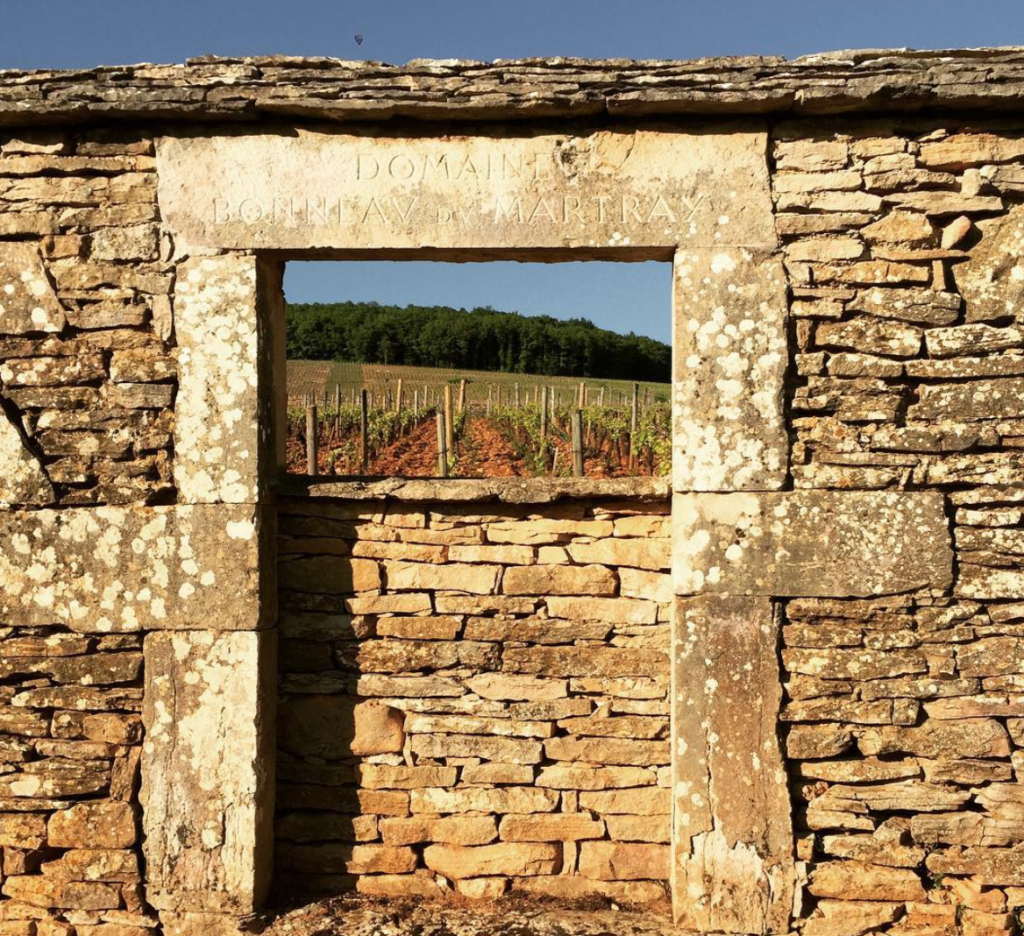 Appellations
Appellations
There are a total of 100 AOCs in Burgundy.
The lowest level in the hierarchy are the 23 Régionale appellations, which account for 51% of production. As the name suggests, some of these are regionwide:
- Bourgogne. This applies to red wines predominantly from Pinot Noir (some César can be added in the Yonne) and white wines made from Chardonnay.
- Bourgogne Aligoté is a white wine made from Aligoté grapes grown anywhere in Burgundy.
- Bourgogne Clairet ou Bourgogne Rosé
- Bourgogne Passe-tout-grains is a light, fruity rosé or red wine; at least a third of the grapes must be Pinot Noir and no more than two-thirds can be Gamay.
- Côteaux Bourguignons / Bourgogne Grand Ordinaire / Bourgogne Ordinaire for white and red wines and Côteaux Bourguignons Rosé or Clairet for rosés. This applies to white, rosé or red wines from 4 different départements, so is not fully regionwide. The reds and rosés are made with Gamay, Pinot Noir as well as César and Tressot in the Yonne, while the whites are made with Aligoté, Chardonnay, Melon de Bourgogne and, in the Yonne, can include the Sacy variety.
- Bourgogne Mousseux is a sparkling wine that can be reds or rosé, mainly made from Pinot Noir and Gamay, while César and Tressot can be added in the Yonne, or white, mainly made from Chardonnay. Crémant de Bourgogne is seen as higher quality.
- Crémant de Bourgogne is sparkling wine and has been covered under wine styles above.
However, some régionale AOCs are specific to a sub-region or particular delimited area, namely:
- Bourgogne Chitry
- Bourgogne Côte Chalonnaise
- Bourgogne Côtes d’Auxerre
- Bourgogne Côtes du Couchois
- Bourgogne Côte Saint-Jacques
- Bourgogne Coulanges-La-Vineuse
- Bourgogne Epineuil
- Bourgogne Hautes Côtes de Beaune
- Bourgogne Hautes Côtes de Nuits
- Bourgogne La Chapelle Notre-Dame
- Bourgogne Le Chapitre Bourgogne Montrecul
- Bourgogne Tonnerre
- Bourgogne Vézelay
- Mâcon
- Mâcon Villages
- Mâcon suivi du nom du village
The mid tier of the hierarchy is made up of 44 Village AOCs, which include the 644 climats considered to be Premier Cru appellations. Village and Premier Cru appellations account for 48% of production. Meanwhile, the 33 elite Grand Crus produce just 1% of Burgundy’s wines.
Business
The wine industry’s impact on the economy of Burgundy:
- 45,200 jobs
- 3.5% of GDP
- 2% of agricultural land
Sales: 180 million bottles are sold on average each year.
49% are exported with the key markets being:
- USA 20%
- UK 19%
- Japan 10%
- Germany 8%
- Canada 7%
The Crémant de Bourgogne producers’ union UPECB (Union des Producteurs Elaborateurs de Crémant de Bourgogne) has 3284 members.
Interesting Burgundy Fact:
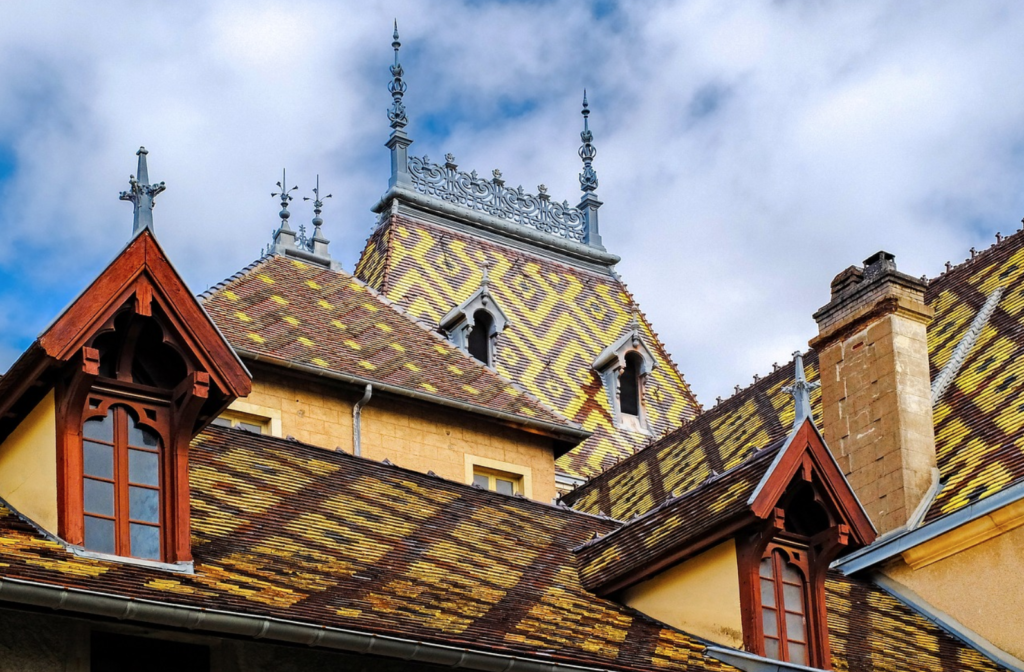
The Hospices de Beaune is an old almshouse and hospital that was built for the poor in Beaune in 1443. Each year in November an important wine auction is held there.
Sources:
Official website of the Bourgogne Wine Board (BIVB) (source of statistics)
Clarke, O. & Rand, M. Grapes and Wines. 2015 edition. London: Pavilion.
Robinson, J., 2015. The Oxford Companion to Wine. 4th Ed. Oxford: Oxford University Press.
Jefford, A., 2017. Jefford on Monday: Burgundy’s other self. June 5. Decanter {online}. Available at: http://www.decanter.com/wine-news/opinion/jefford-on-monday/cremant-de-bourgogne-wine-guide-370176/
Mercer, C., 2016. New Crémant de Bourgogne ranking agreed. April 19. Decanter {online}. Available at: http://www.decanter.com/wine-news/new-cremant-de-bourgogne-ranking-approved-299308/
Jefford, A., 2017. Jefford on Monday: Burgundy notebook. June 19. Decanter {online}. Available at: http://www.decanter.com/wine-news/opinion/jefford-on-monday/burgundy-2017-notebook-370977/
Photos, videos and images from www.vins-bourgogne.fr
[/mepr-show]


